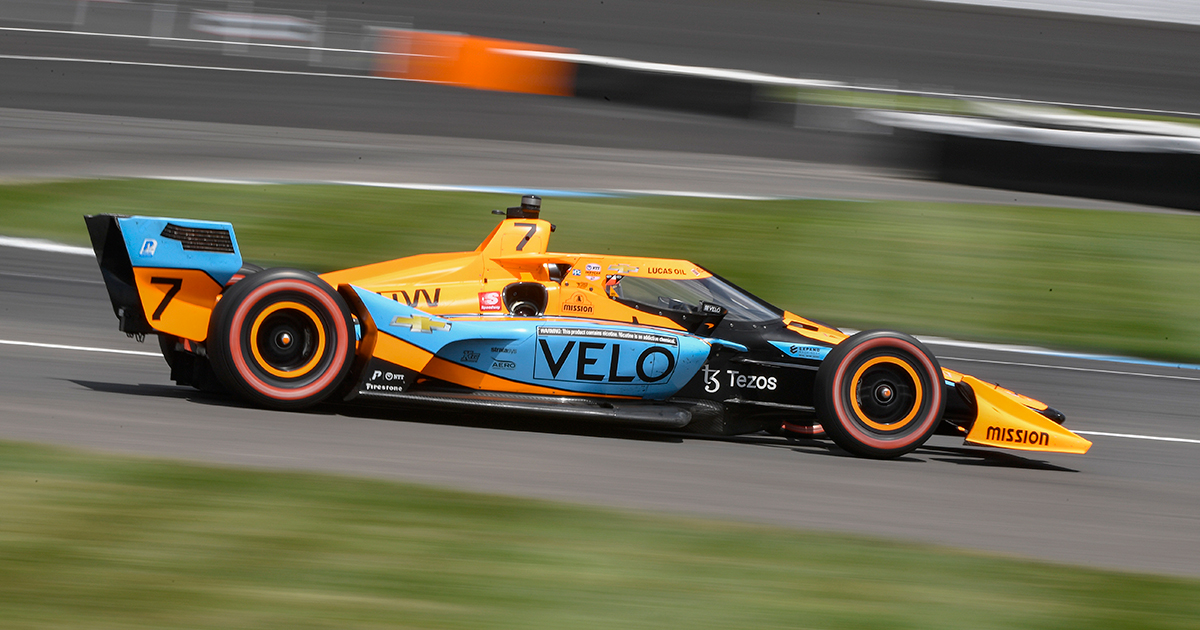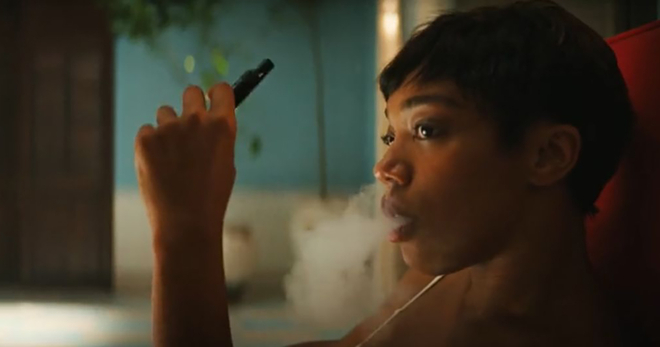Netflix streams 1.1 billion minutes of tobacco-related imagery in newest season of F1 racing show
Formula One claims to be the fastest-growing major sports league in the world, and the tobacco industry has taken notice. Tobacco companies Phillip Morris International (PMI) and British American Tobacco (BAT), sponsors of the Ferrari and McLaren teams since 1997 and 2019 respectively, have spent millions of dollars on sponsorships and according to a recent report from STOP (Stopping Tobacco Organizations and Products), F1 and its tobacco industry sponsors are now reaching new audiences, made possible by the Netflix docu-series “Drive to Survive.”
If viewers watch even one minute of “Drive to Survive” Season 4, they are likely to be exposed to tobacco-related branding. Viewers of Season 4 were exposed to 149 minutes of content that contains tobacco-related branding – much of which occurs during the opening minute of the episode, meaning viewers don’t have to watch for long before seeing branded tobacco content. This is especially concerning given that peer-reviewed research from Truth Initiative shows that exposure to tobacco imagery in episodic streaming content can triple a young person’s odds of starting to vape.

The tobacco content in “Drive to Survive” is part of a troubling trend: Truth Initiative’s 2022 report on tobacco imagery in streaming found that among shows most popular among 15- to 24-year-olds, 60% contained depictions of smoking or vaping, effectively exposing 25 million young people to tobacco imagery. This imagery is directly contributing to the youth e-cigarette use crisis that is impacting youth physical and mental health.
F1 and Netflix deliver tobacco company branding onto millions of screens
Tobacco company spending on F1 has risen dramatically in recent years, reaching new heights in 2020 (almost $100 million) not seen since 2011. Since 2019, the Formula One Group has partnered with Netflix to provide access to the F1 executives, teams, and drivers so Netflix can create dramatic coverage of F1. By offering a behind-the-scenes look at the world of racing, Netflix has earned F1 a larger global audience, including more young viewers and women.
According to the report:
- “Drive to Survive” viewers are younger than F1-only viewers (46% are under age 34 versus 16% for F1), more affluent (69% earn more than $100,000 versus 49% for F1) and are more likely to have children living at home (49% vs 21%).
- The show has also been credited with prompting a 30% increase in female interest in the sport.
- F1’s increasing visibility on social media, as well as its partnership with Netflix, are two ways in which F1 appears to be appealing to a younger audience – a demographic already aggressively targeted by the tobacco industry.
Not only does "Drive to Survive” feature current tobacco industry branding seen in F1, it also contains historical footage of tobacco brands, allowing these companies to get even more mileage out of sponsorship money they’ve already spent.
In 2019, Netflix committed to eliminating tobacco imagery in programming rated TV-14 or below and pledged to cut back on tobacco depictions overall. According to an analysis in STOP’s report, Netflix has streamed globally 57 million hours of “Drive to Survive,” which is rated TV-MA (17 and older), including an estimated 1.1 billion minutes of tobacco-related content.
F1 sponsorships and Netflix series help tobacco companies subvert restrictions on tobacco advertisements
Many countries around the world restrict the advertisement of tobacco products. For example, Australia has strict regulations, and branding for tobacco products can’t be used on cars at the Australian Grand Prix. But Australian fans are exposed to Vuse, which is sold in Australia, when they watch coverage of “Drive to Survive” or engage with F1 content on social media. Mexico banned e-cigarettes in May 2022 and has implemented stronger regulations on the availability and marketing of all tobacco products, but the Vuse brand was used on McLaren cars during the 2022 Mexico City Grand Prix in October. India has tight regulations on tobacco use in TV and film, yet fans in India are exposed to cigarette company messaging and e-cigarette branding when they watch F1 and “Drive to Survive.”
In the United States, cigarettes and smokeless tobacco products are not allowed to be advertised on TV and brand name sponsorship of events with a significant youth audience are also prohibited. However, e-cigarettes are not subject to the same restrictions, which means tobacco companies like BAT can still get billions of eyes on branding for their Vuse product when they show branded liveries in “Drive to Survive.”
As research continues to show that on-screen tobacco imagery drives youth tobacco use, entertainment companies must take action to protect young viewers. Truth Initiative recommends a comprehensive set of policies to reduce youth exposure to tobacco imagery, including:
- Urging distributors to develop transparent anti-tobacco policies and ensuring that content creators are aware of these policies
- Expanding education and outreach within the entertainment industry about the importance of keeping tobacco out of content popular among young people
- Showing evidence-based and proven-effective tobacco prevention ads from public education campaigns like truth® to counteract the impact of tobacco imagery in entertainment media
- Ensuring media companies have not accepted funds from tobacco companies in exchange for using or showing tobacco products in their content
- Ensuring that productions that receive state or federal subsidies do not contain tobacco imagery
See our latest report on tobacco imagery on screen, “While You Were Streaming: Tobacco’s Starring Role,” for more details.
More in tobacco in pop culture
Want support quitting? Join EX Program
By clicking JOIN, you agree to the Terms, Text Message Terms and Privacy Policy.
Msg&Data rates may apply; msgs are automated.


